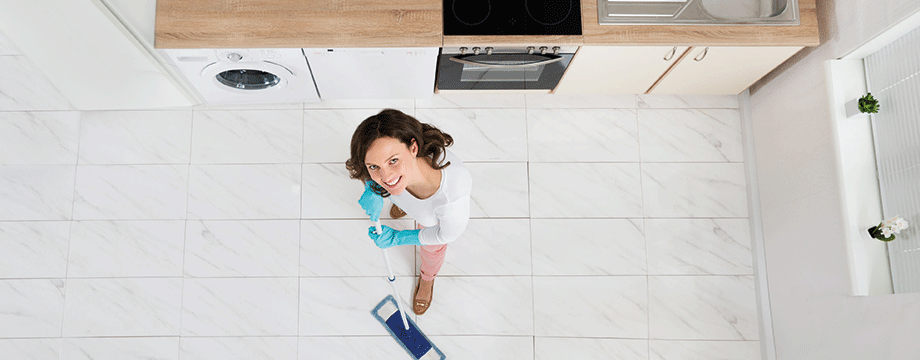The green spring clean

Give your home a non-toxic spring clean with these top tips
Spring is here and all that extra daylight and sunshine has a habit of highlighting the cobwebs and dust that have been lurking around since winter. It’s time to roll up those sleeves, employ a bit of elbow grease and give the house a good clean!
But before you reach for conventional cleaning products, which tend to be chock full of chemicals, try our tips for how to spring clean the natural way. The best thing is that you will probably find most of these ingredients in your kitchen cupboard already!
Bicarbonate of soda
“This is an essential ingredient for a natural spring clean,” says eco living expert Janey Lee Grace, author of Look Great Naturally Without Ditching the Lipstick (www.imperfectlynatural.com). “Half a cup of bicarbonate of soda in a washing up bowl of warm water and a microfibre cloth will clean most surfaces. It’s great for soaking up odours too and is even good for stains – mix it with a little water to form a paste and it’s good to attack mud, grass and perspiration. If you feel the need for something more antibacterial use a few drops of tea tree essential oil.”
Olive oil
Olive oil can help to give wooden floors and furniture a new lease of life – with no need for toxic chemicals. Mix together two cups of olive oil with one cup of lemon juice or vinegar and work into the furniture or floor using a soft cloth. This same combination would make a pretty good salad dressing too!
Vinegar
“White vinegar in particular has many uses,” says Janey, “from descaling kettles to cutting through grease. You can make a ‘fizzing’ solution with bicarbonate of soda which is great for cleaning the loo. Vinegar is also fantastic for lino floors. Use a ratio of 50:50 hot water and white vinegar and it will bring it up like new. Don’t use on waxed floors though as it can remove the wax!” For a great natural cleaner that will tackle even the most stubborn dirt, mix together one part distilled white vinegar with two parts water and a squeeze of lemon juice.
White bread
Did you know that you can make an effective natural scourer from the crust of a slice of stale white bread? You can use it to clean greasy finger marks from walls and surfaces and can even use it to get rid of marks on your wallpaper without damaging the paper.

Lemons
“These are a must in your natural cleaning kit,” says Janey. “After you have made a salad dressing or squeezed them over your fish, you can clean a ceramic sink with half a lemon and it will make it shine. Add a bit of lemon peel to the cutlery container in the dishwasher and it will help to shine the cutlery.” Another top tip is to create your own natural air freshener by mixing together some lemon juice and water and spritzing it around the home. There will be a lovely, zesty scent in the air!
Newspaper
Newspaper makes a surprisingly good natural window cleaner when used with a combination of distilled white vinegar and water. Mix together equal parts water and vinegar, add to a spray bottle and then use a piece of newspaper in the same way as a cloth to clean your windows. Finish off by polishing with a dry cloth for a touch of sparkle!
Try this
Cedar oil is a great plant-based ingredient to look for when choosing natural cleaning products. “Cedar trees grow in highly dense foggy areas, like the San Francisco Bay Area,” says Lois Clark of www.greenbrands.co.uk. “When the fog rolls in off the bay, the trees have had to adapt to extreme levels of moisture in the air. In order to combat mould and fungus, cedar trees have developed anti-fungal properties in their bark. Therefore, using cedar oil in a green toilet cleaner makes sense not only because of its subtle woody aroma, but also because it can fight mould in the moist environment of your bathroom. By using the natural properties of essential oils such as cedar wood oil, green cleaners can be more sustainable by using fewer ingredients to do more – in this example the essential oil both adds scent and cleans. Fewer raw materials in each formula equals less packaging, shipping and waste and reduces their carbon footprint.”
Quick tips
• Try wool dusters – wool contains lanolin which attracts dust. They don’t move the dust around and you can make them from old items of clothing.
• When cleaning glassware clean it with hot water but always rinse with cold as it gives it extra sparkle.
• Remove pet hair from fabric or upholstery with a rubber glove. Put it on one hand and stroke the hair off – it comes off instantly!
Read previous Your Living articles here...
Read articles from our latest issue here...